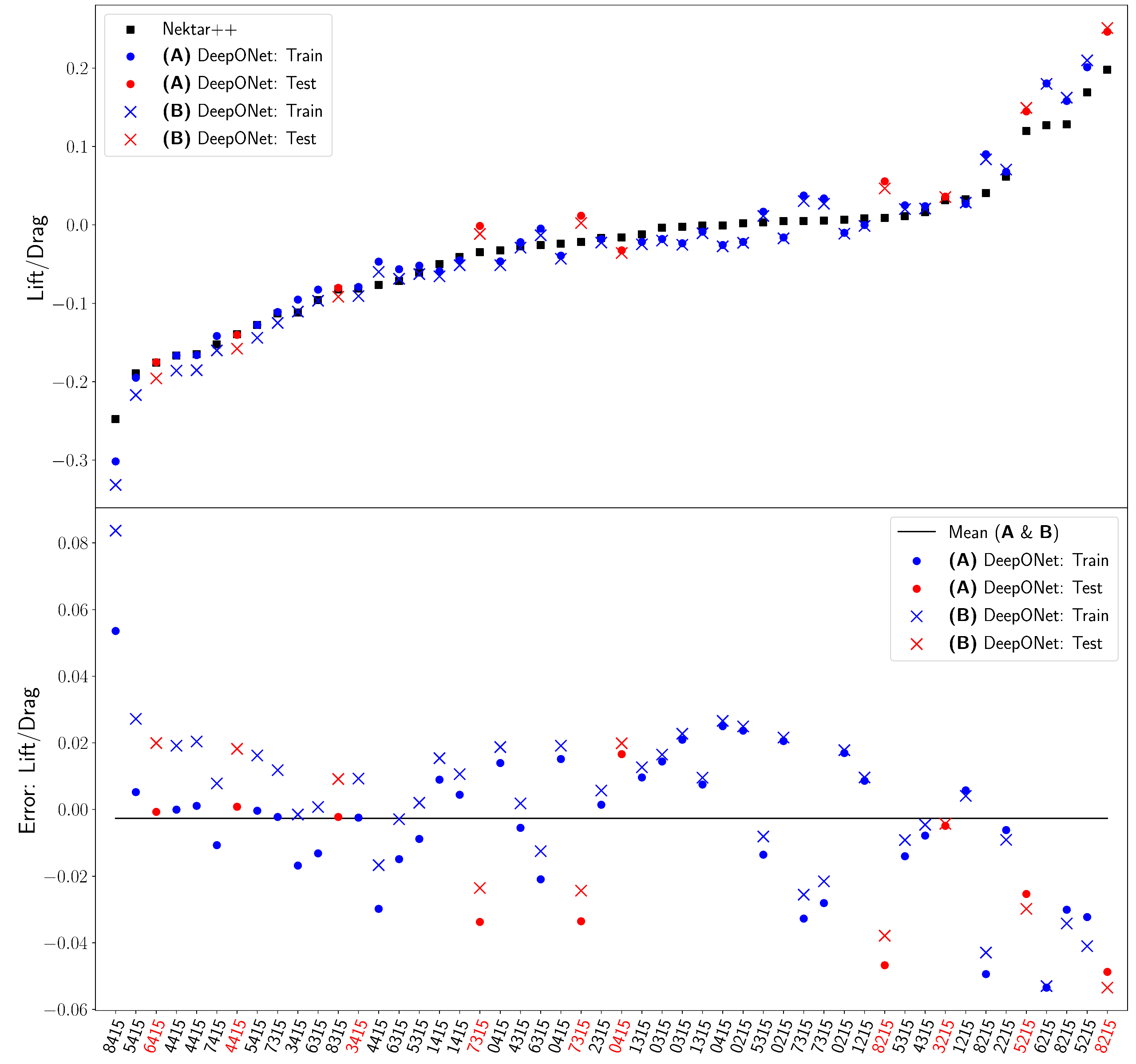Unlike physics-informed neural networks (PINNs) [Rai19P], a DeepONet [Lu21L] does not require any optimization during inference, hence it can be used in real-time forecasting. Traditional numerical models, such as compressible flow solvers, are computationally intensive for accurately modeling the flow field around complex airfoils. Surrogate models can alleviate the time-consuming optimization loop where the numerical solver calculates aerodynamic forces.
In a recent publication [Shu24D] in Engineering
Applications of Artificial Intelligence, the authors present a case study on
the use of DeepONet for airfoil shape optimization. They demonstrate
empirically that DeepONet can accurately predict flow fields around unseen
airfoils, cf. Figure 7, and serve as a fast surrogate for the optimization of
airfoil shapes with respect to a general objective function.  Figure 7: DeepONet Predictions. The pressure, density, and
velocity fields around the test set airfoil NACA 7315 predicted by the DeepONet,
and the corresponding pointwise absolute errors are also provided.
Figure 7: DeepONet Predictions. The pressure, density, and
velocity fields around the test set airfoil NACA 7315 predicted by the DeepONet,
and the corresponding pointwise absolute errors are also provided.
Specifically, the study optimizes the constrained NACA four-digit problem to maximize the lift-to-drag ratio. The results show minimal to no degradation in prediction accuracy using DeepONet while reducing the online optimization cost by approximately 30,000 times.
How much data is needed?
The crucial question is: how much data is needed to train the surrogate model? If the model requires too much data, the computational cost of training may outweigh the benefits.
Remarkably, the authors investigate using a small dataset to train the surrogate model: 40 training and 10 testing examples. Yet, DeepONet generalizes well to unseen airfoils (see Figure 9).

Figure 9: Plot of the computed lift-to-drag objective for the entire dataset sorted by the Nektar++ reference values. As seen in both plots, the approximation to the high-fidelity CFD solution is very accurate and consistent throughout the entire parametric domain. Particularly, we note that the testing set performs comparably to the training set, meaning there is little to no generalization error, which is necessary when inferring unseen queried geometries during optimization.
The paper effectively demonstrates an illustrative example within a general framework, showing how DeepONets can learn complex fluid dynamics and highlighting their potential to accelerate classical simulation tasks using deep learning.